Laos Flag Meaning
Three horizontal stripes of red, blue, and red with a white circle centered on the blue stripe, representing the blood of independence, the Mekong River, and the full moon reflecting unity of the Lao people.
- Continent
- Asia
- Adopted
- 1975
- Ratio
- 2:3
- Colors
- red, blue, white
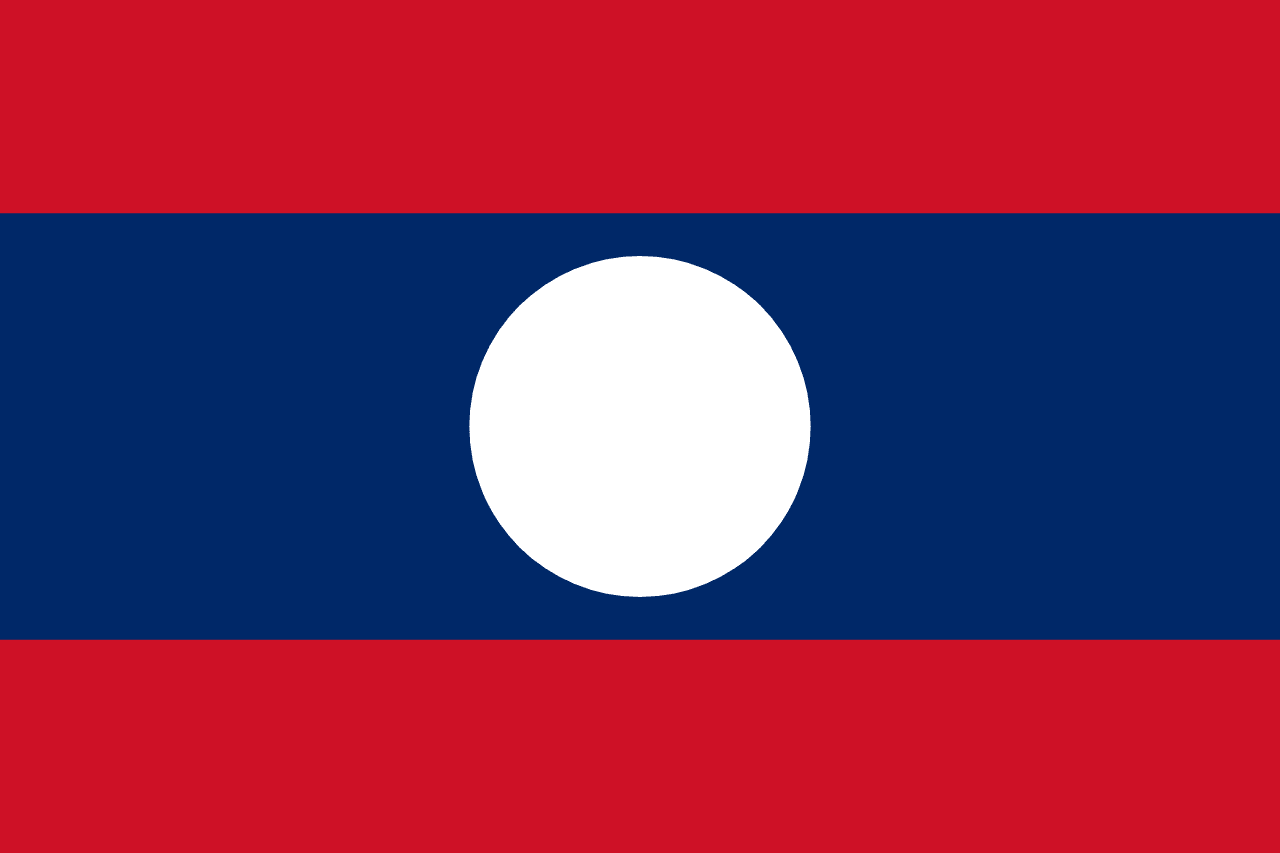
Symbolism
Red Stripes: Represent the blood shed by the Lao people in their struggle for independence and freedom from colonial rule, symbolizing the sacrifices made for national sovereignty and self-determination.
Blue Stripe: Represents the Mekong River, which flows through Laos and is central to Lao life, culture, and economy. Blue also symbolizes prosperity, wealth, and the country's Buddhist heritage.
White Circle: Symbolizes the full moon reflecting over the Mekong River, representing the unity of the Lao people under one nation and the Buddhist concept of enlightenment and spiritual completeness.
Moon Symbolism: The white circle also represents the bright future of Laos and the hope for peace and prosperity under the socialist system, as well as the country's neutrality in international affairs.
Buddhist Heritage: The overall design reflects Laos's Buddhist traditions, with the circle representing the wheel of dharma and the eternal cycle of life, death, and rebirth in Buddhist philosophy.
History
- 14th-18th Century: The Kingdom of Lan Xang ('Land of a Million Elephants') was a powerful Lao kingdom that used various royal banners and Buddhist symbols, establishing the cultural foundation for future national symbols.
- 1893-1953: Laos was part of French Indochina, using French colonial flags while traditional Lao symbols and Buddhist imagery persisted in local cultural practices and royal ceremonies.
- 1953-1975: The Kingdom of Laos gained independence from France and used a flag with three elephants under a parasol, representing the traditional 'Land of a Million Elephants' heritage.
- 1955-1975: During the Laotian Civil War, the communist Pathet Lao used the current flag design as their revolutionary symbol, while the Royal Lao Government maintained the elephant flag.
- December 2, 1975: The Pathet Lao victory led to the abolition of the monarchy and the establishment of the Lao People's Democratic Republic, officially adopting the current flag design.
- 1975-1991: During the strict socialist period, the flag represented the revolutionary ideals and close alignment with Vietnam and the Soviet Union in Indochinese communist solidarity.
- 1991-Present: Economic liberalization began with the 'New Economic Mechanism,' but the flag remained unchanged, representing continuity of the socialist system with market-oriented reforms.
Trivia
- Laos is the only landlocked country in Southeast Asia, and the flag's blue stripe represents the vital Mekong River that connects it to the sea and neighboring countries.
- The white circle makes Laos one of the few countries with a perfect circle as a central element on their flag, creating a distinctive and easily recognizable design.
- Laos was historically known as 'Lan Xang' (Land of a Million Elephants), though the current flag replaced the traditional elephant symbols with more abstract revolutionary imagery.
- The flag represents one of the world's least developed countries, with the symbolism of prosperity and hope contrasting with ongoing economic challenges.
- Laos is the most heavily bombed country per capita in history due to the Secret War during the Vietnam conflict, making the flag's peace symbolism particularly meaningful.
- The flag appears on Lao kip banknotes alongside images of hydroelectric dams and Buddhist temples, reflecting the balance between development and tradition.
- Buddhism is practiced by about 67% of the population, and the flag's circular symbolism connects to Buddhist concepts of completeness and enlightenment.
- The Mekong River, represented by the blue stripe, provides fish that make up about 80% of animal protein consumed in Laos, highlighting its vital importance.
- Laos celebrates National Day on December 2, commemorating the 1975 establishment of the Lao People's Democratic Republic and the flag's official adoption.
- The flag represents a country that produces some of the world's finest coffee, with coffee exports being a major source of foreign currency earnings.
- Traditional Lao silk textiles often incorporate the flag colors, connecting national identity to ancient weaving traditions and cultural crafts.
- The flag flies over Luang Prabang, a UNESCO World Heritage city that represents the fusion of traditional Lao architecture with French colonial influences.
- Laos has no railways connecting to neighboring countries, making the Mekong River (represented by the blue stripe) crucial for transportation and trade.
- The flag appears at ASEAN meetings, where Laos plays an active role in Southeast Asian regional cooperation despite being the poorest member nation.
- Sticky rice is the staple food of Laos and central to cultural identity, though this agricultural heritage is not directly represented in the more abstract flag design.
Related Countries

Thailand
Asia
Five horizontal stripes with red at top and bottom, white in the second and fourth positions, and blue in the center, representing the nation and the people, the purity of Buddhism, and the monarchy, designed by King Rama VI during World War I to show solidarity with the Allies.
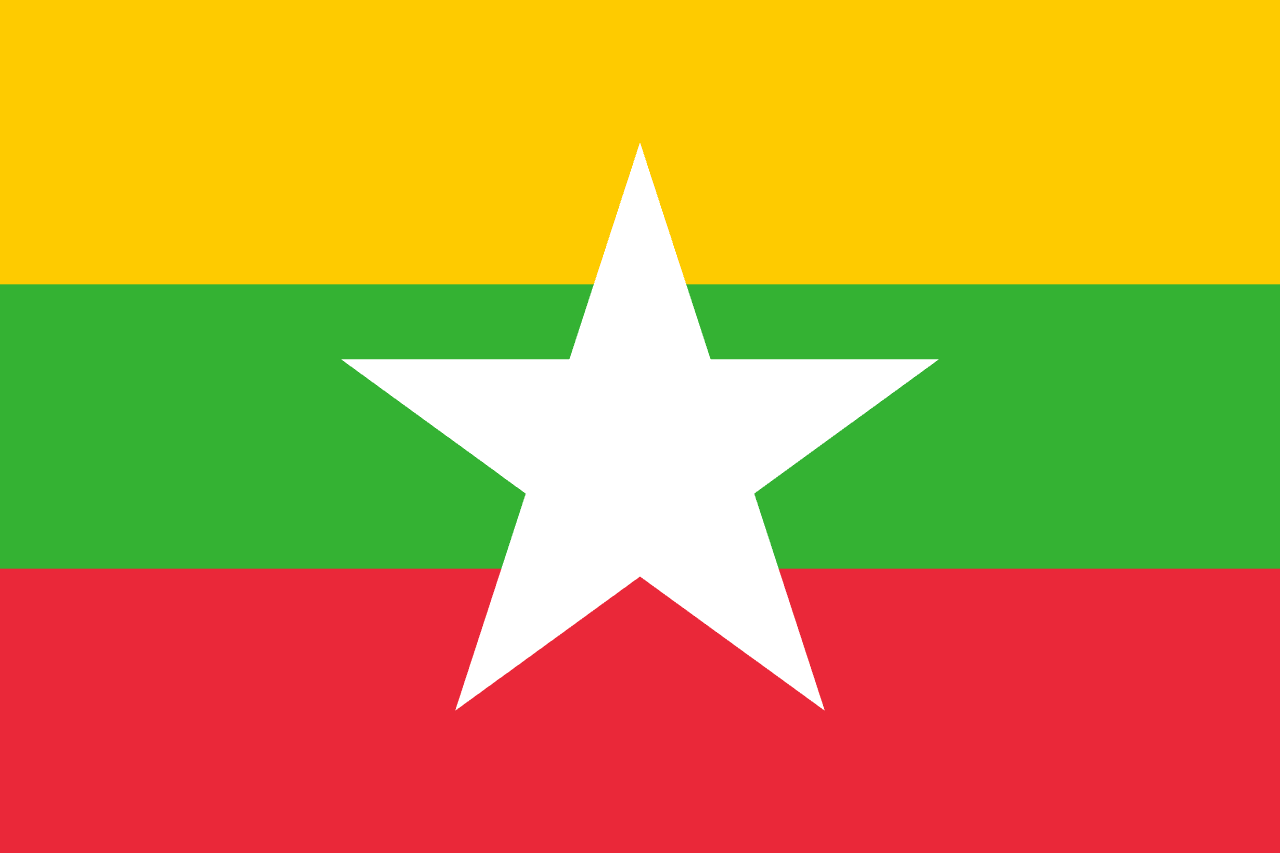
Myanmar
Asia
A horizontal tricolor of yellow, green, and red with a large white five-pointed star in the center. Adopted in 2010, the flag symbolizes unity and a new era for Myanmar.
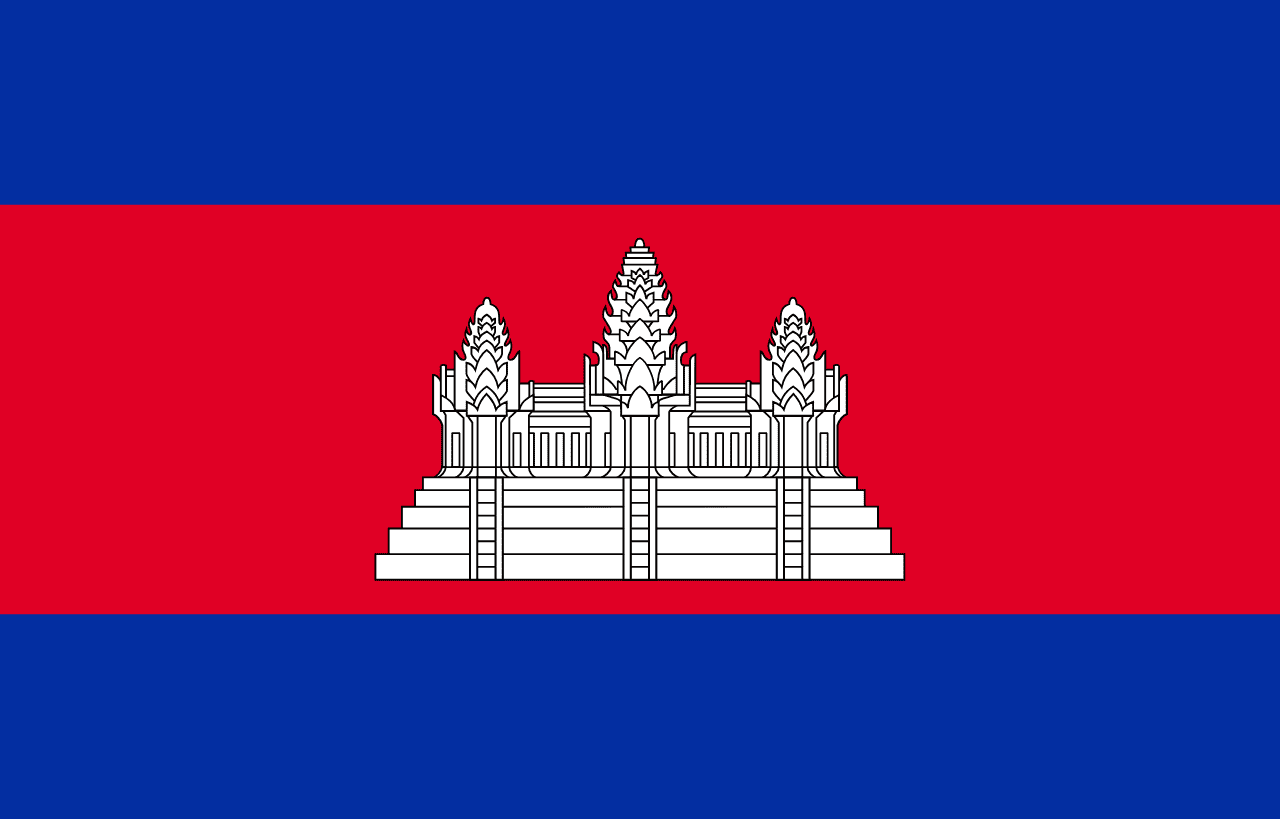
Cambodia
Asia
Three horizontal stripes of blue, red (double width), and blue with a white depiction of Angkor Wat temple in the center, representing the nation, the king, and the sacred temple that symbolizes Cambodia's glorious past and cultural heritage.
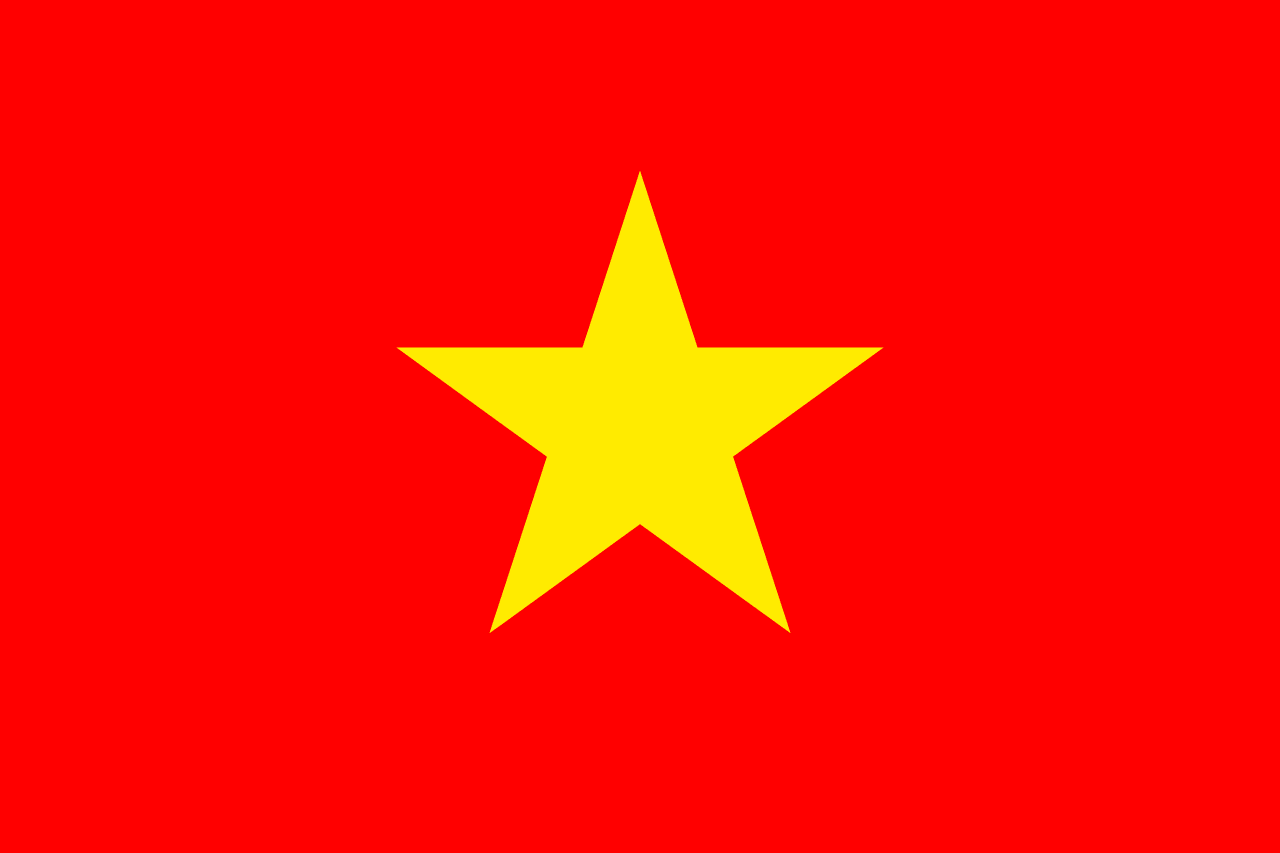
Vietnam
Asia
A red field with a large yellow five-pointed star in the center, representing the blood shed for independence and the unity of workers, peasants, intellectuals, youth, and soldiers under Communist Party leadership in the struggle for national liberation and socialist construction.
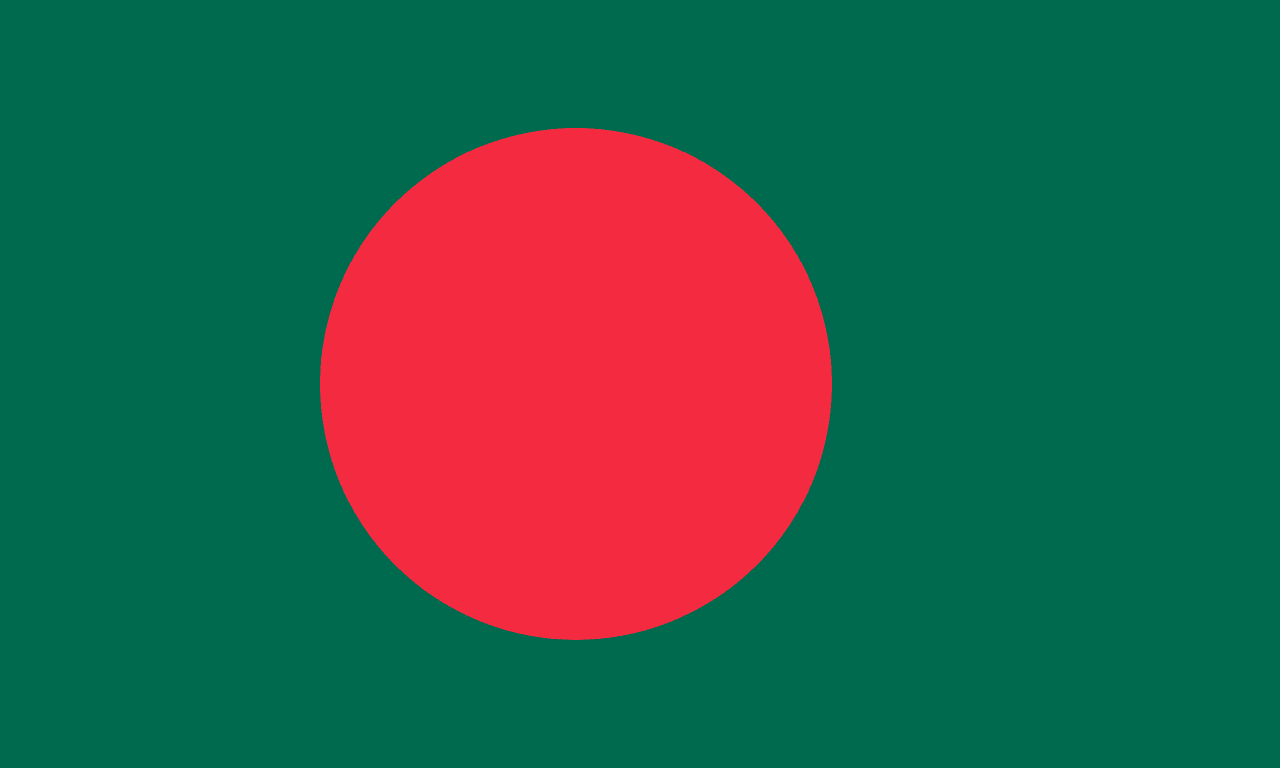
Bangladesh
Asia
A dark green field with a red circle positioned slightly toward the hoist side, representing the lush Bengali landscape and the sun rising over Bengal, as well as the blood shed during the Liberation War of 1971 and the new dawn of independence.
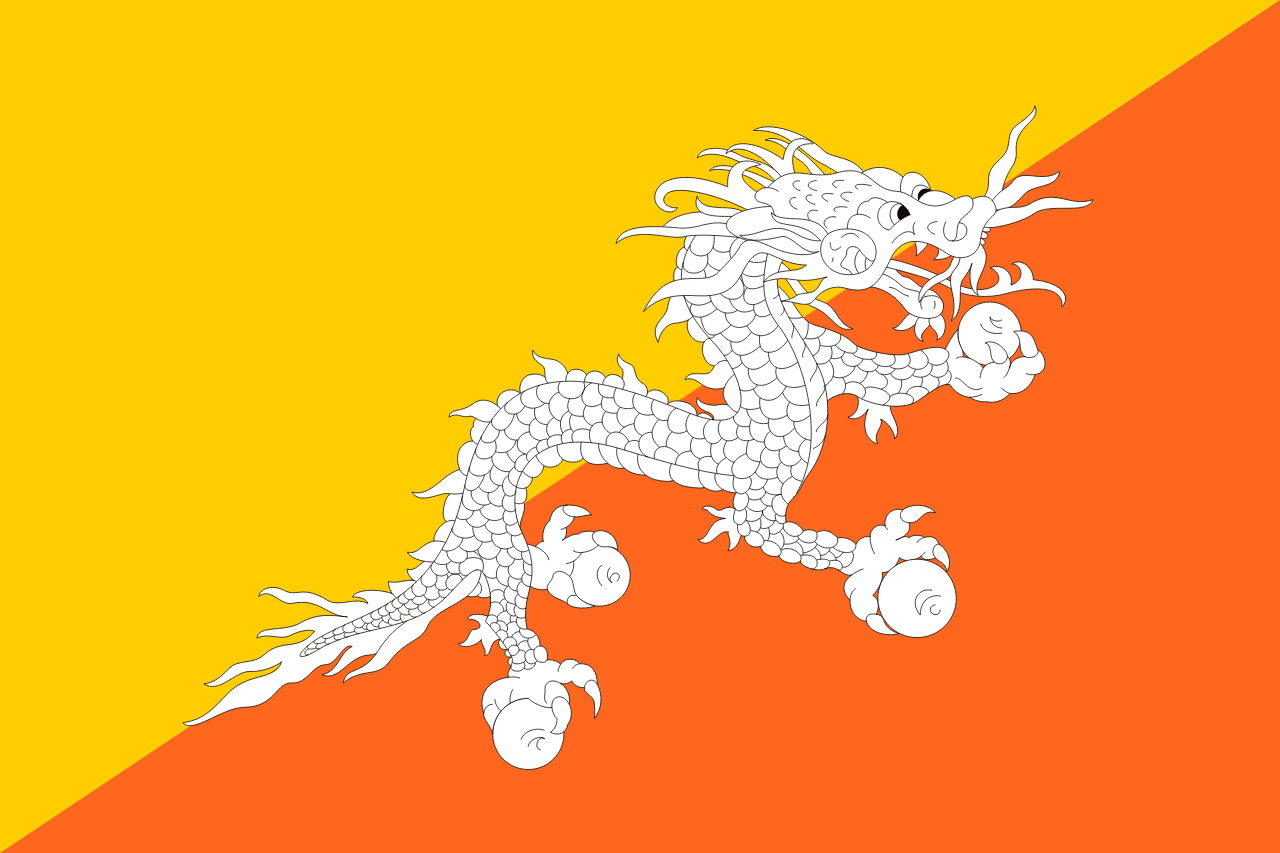
Bhutan
Asia
Divided diagonally with orange in the upper triangle and yellow in the lower triangle, featuring a white dragon (Druk) in the center holding jewels in its claws, representing the spiritual and temporal power of Bhutan and the Thunder Dragon that gives the country its name 'Land of the Thunder Dragon.'